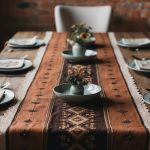Clever Basement Makeover Ideas for Multi-Purpose Areas
Incorporating a Basement Bathroom
Including a bathroom in the basement can increase convenience and add value to a home. When integrating a basement bathroom, homeowners should consider plumbing logistics and local building codes. Existing plumbing lines often affect where a bathroom can be located, sometimes limiting choices.
Selecting compact fixtures is paramount for small spaces. Consider space-saving options like wall-mounted toilets and vanities to maximize floor space. Installing a glass shower can create an illusion of more space, while also providing functional bathing solutions.
Proper ventilation is essential to prevent moisture buildup, which can lead to mold. Adding a powerful exhaust fan helps maintain air quality. Good insulation and soundproofing can also enhance privacy and comfort, ensuring the bathroom is both practical and pleasant.
Fitting in a Home Gym and Sauna
Creating a home gym and sauna in the basement involves careful planning to blend fitness needs with existing space. Flooring is key; rubber or foam tiles provide comfort and safety during workouts. Equipment should be chosen based on available space and fitness goals, prioritizing versatile machines over bulky, specialized ones.
For those considering a sauna, compact, prefabricated models can accommodate smaller spaces. Proper installation requires attention to electrical requirements and ventilation to ensure safe and enjoyable use. Combining gym and sauna areas can encourage a balanced fitness routine, offering both exercise opportunities and relaxation in one location.
By concentrating on these elements, a basement can easily become a hub of multifaceted activities.
Crafting the Perfect Craft Room
A well-designed craft room in the basement can inspire creativity and keep supplies organized. To ensure functionality and comfort, it’s essential to consider storage solutions and the layout of the space. By maximizing every inch, even a small basement can become an efficient craft haven.
Storage is a crucial element in any craft room. Incorporating open shelving allows crafters to easily access frequently used items. They can also use storage bins to categorize and store materials tidily. Transparent bins help users locate supplies without opening each container, adding convenience to the crafting process.
For different craft projects, having a dedicated workspace is important. A sturdy table provides adequate room for activities such as sewing, painting, or scrapbooking. It often helps to have adjustable lighting in this area to ensure visibility when working on intricate details. Proper lighting is essential to prevent eye strain during long crafting sessions.
Seating should be chosen with comfort and support in mind. A well-cushioned chair can be particularly helpful during extended periods of creativity. Additionally, a pegboard wall organizer can keep tools and small items within arm’s reach, reducing clutter on tabletops.
By organizing the craft room thoughtfully, it becomes easier to maintain order. Grouping similar items together and labeling bins can speed up the process of finding needed materials. Thoughtful organization also ensures that the creative energy is focused more on crafting and less on tidying up.



